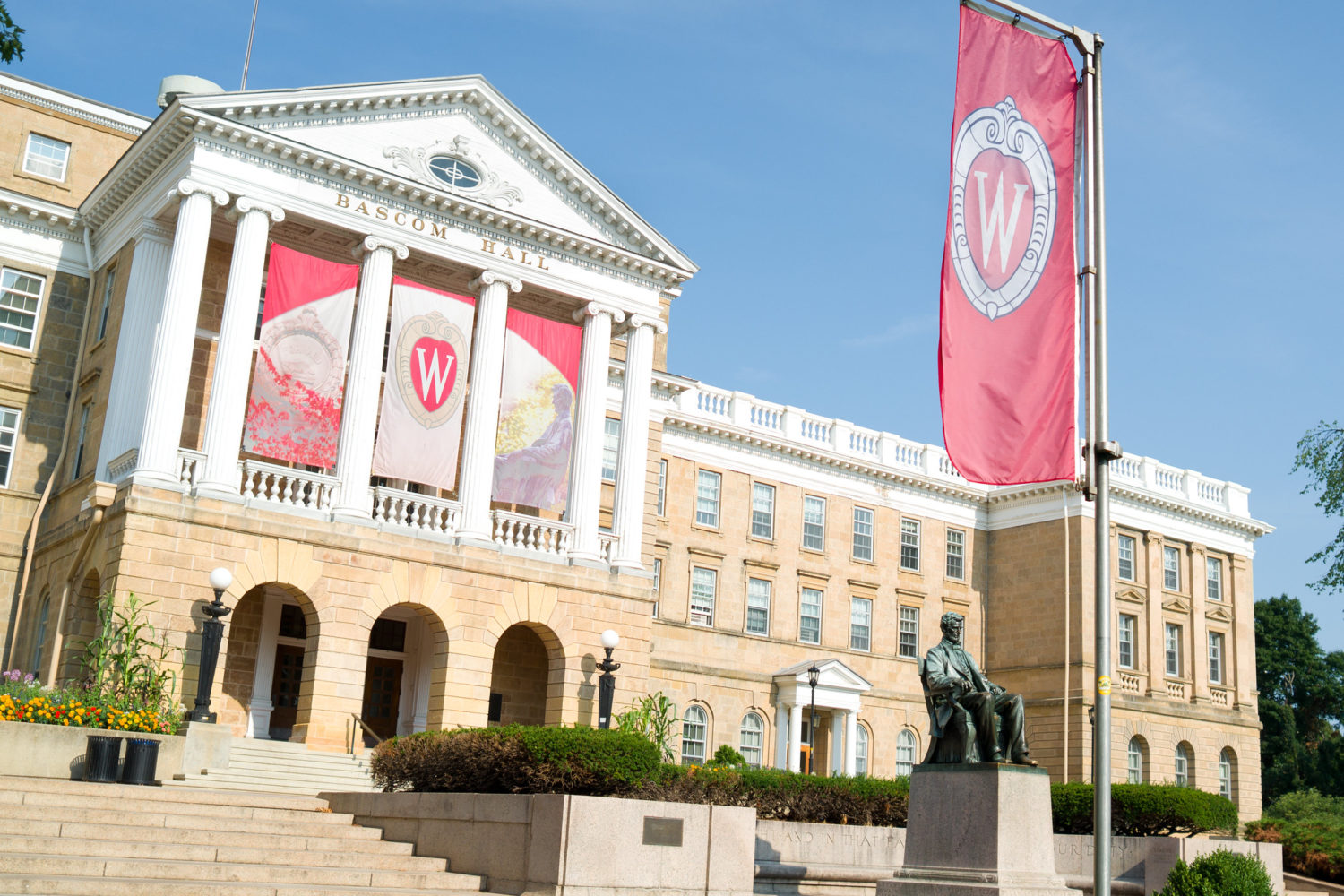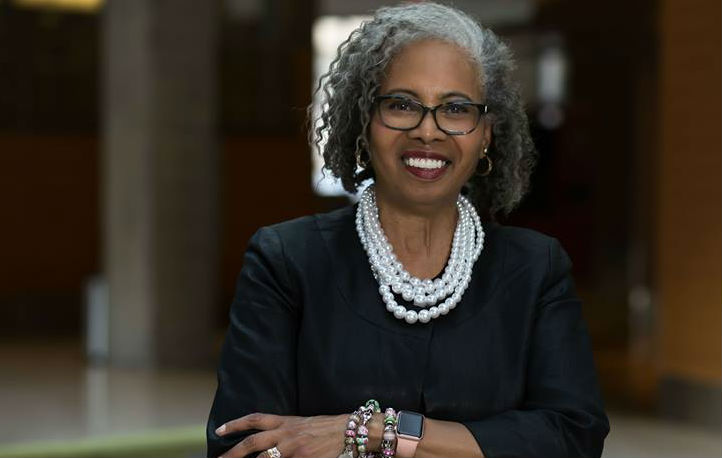
Just over three percent of University of Wisconsin-Madison faculty are Black or African American faculty members out of total 2,266 faculty headcount — less than half of the proportion of the population in Wisconsin and in Madison, Madison365 has learned through information obtained from UW-Madison.
That’s only slightly higher than the proportion of the student population that identifies as Black — about 2.85 percent.
This underscores a huge disparity among the university’s faculty members. Despite being the second most populous race in Wisconsin and Madison, Black and African American people make less than 12 percent of even the faculty of color at UW-Madison.
According to UW-Madison’s Division of Diversity, Equity and Educational Achievement (DDEEA) there are 63 Black / African American faculty members when using federal category of Black/African American. Counting all who identify as Black or Afrian American, regardless of what other race or ethnicity they identify as, then the figure goes up to which still makes up only 3.2percent of the total number of faculty members at UW-Madison.
Black / African Americans made up 6.7 percent of Wisconsin’s estimated population of 5.8 million in 2019, the second largest population after white people, who make up 87 percent. Black African Americans are 6.8 percent of Madison’s population of 259,680. The university is the largest employer in the state with over 2,260 faculty and staff.
According to DDEEA, as of August 10th, 2020, there were 538 faculty of color, including faculty members who hold limited appointments — about 22 percent of the total faculty. As many as 32 more have been hired and 27 promoted since last year. They include all the races and ethnic groups other than white and non-Hispanic. DDEEA said schools and colleges vary in their ways of recording faculty in the HR system, and as a result, there is no data to identify specific departments that have no Black African Americans faculty members.
Responding to the disparity, the DEEA office said there are ongoing efforts to recruit faculty of color. In 2018, the Office of the Provost established the Target of Opportunity Program (TOP) to enhance recruitment of faculty from underrepresented backgrounds in their respective fields. TOP is providing departments with increased financial support from the central administration to pursue and hire outstanding individuals. To date the Provost Office has approved 70 recruitment proposals from colleges and schools around campus.
In an email to Madison365 the Office of the Vice Provost and Chief Diversity Officer, Division of Diversity, Equity & Educational Achievement, Interim Deputy Vice Chancellor for Diversity and Inclusion, Vice Provost and Chief Diversity Officer Dr. Cheryl B. Gittens said that some of their efforts to increase campus diversity are seeing progress. For example, she stated, faculty of color have increased from 17 to 22 percent.
“The university is facing a financial loss of at least $150 million due to the pandemic, but reinvesting in TOP is a significant indicator of commitment and priority,” she stated in email. She said affinity groups, training on recruiting for diversity, and awards recognizing the service performed by underrepresented faculty are some of the measures to retain diverse talent.
According to Forbes, a new study from the Hispanic Journal of Law and Policy found that there has been little growth in the number of college faculty members of color. The aforementioned study examined doctoral-status institutions between 2013 and 2017 and found that the number of Hispanic and Latino faculty members grew by less than 1% and the number of black faculty members grew by only one-tenth of a percent.
In the fall of 2018, 67.2 percent of UW-Madison’s 44,411 enrolled students were white. African-Americans accounted for just 2.85 percent of students, despite 6.7 percent of Wisconsin’s residents identifying as Black or African American.
These disparities are nothing new. In 1969, Black students at the University of Wisconsin-Madison called for a strike to protest the longstanding issues of diversity, a lack of an African-American Studies Department and other key issues were tenets of their 13 demands issued to administrators. They marched to the Capitol, took over classrooms and blocked entrances to academic buildings.
Memorialized as the Black Student Strike, its 50th anniversary prompted both celebration and reflection across campus in 2019. In an interview, a black African American parent was worried when his kid said he wanted to go to UW-Madison and told him, “Black people don’t live in Wisconsin”.
To understand the broader picture about the disparity we talked to Professor Emerita Dr. Gloria Ladson Billings, who cited multiple reasons for the very small number of Black and African American faculty members on UW-Madison’s campus.
Ladson-Billings formally retired from her position as the Kellner Family Distinguished Chair in Urban Education in 2018 after serving on the UW–Madison faculty for more than 26 years. She was the first black woman to become a tenured professor in UW–Madison’s School of Education in 1995.

“There has to be an aggressive attempt to recruit, but every major campus has some kind of recruitment policy. None of them I’ve ever been on has well-thought-out retention policy,” she said. “People have this idea that they just have to get you here … but what they are not considering all of the other things that make your life ok in that place.”
She said quality-of-life issues are rarely attended to, and shared an anecdote from her own personal experience.
She said she was recruited to be a dean at one of the other Big Ten schools, and as a part of the recruitment she had to go on a dinner with all other deans. She would have been the only African American dean if she got that job.
“When I got into the car with a woman who was driving me to the dinner, the very first thing she said to me was, ‘We are spending all this money on Black faculty members, but they do not stay.’ It was not even a hello. She was griping about the fact that her campus spends money on Black faculty, and they don’t stay,” Billings said. “I said to her, ‘Suppose I actually am offered this job and decide to take it. Where would you tell me to go get my hair done?’ She was stunned and suggested a city that was an hour and half away. I said, ‘Oh really…so I would drive an hour and half trying to find a beauty salon, spending four hours to get my hair done, every couple of weeks, is what you are telling me?’ I said, ‘I have been on this campus for two days I have seen plenty of black women they are not driving to that city to get their hair done.’”
She said people in administration don’t know the quality of life issues that many Black folks care about.
“They want to know where their kids are going to school, what kind of social life they can have on and off campus and what else there is for me to do, is there a radio station,” she said. “This seems so basic, but most campuses do not do it.”
She said what allowed her to come to Wisconsin was then-Chancellor Donna Shalala’s aggressive recruitment policy in 1988 -1993. In a published interview at the time, Shalala said, “I am sick and tired of them saying that there are no Black qualified faculty out there. They are out there, and we are going to get them.”
“That kind of aggressive statement spread across the country and we were like, ‘Wow, she is serious,’” Billings said. “The very first thing Donna Shalala said to me was, ‘What do we need to do to get you?’ And I said, ‘You know I actually have a job.’ I was working at Santa Clara University. She replied, ‘That is not the question I asked you.’ She was aggressive in getting me.”
Billings accepted the job — 29 years ago now — but was diagnosed with breast cancer before she taught her first class, 29 years ago. She was not yet covered by university health insurance, yet Donna Shalala called her and said not to worry about any of this.
“I felt allegiance to her,” Billings said.
Billings said Shalala gave Black faculty some level of autonomy, as well. Billings said Shalala invited all of the Black women faculty to her house for dinner, from across all schools and all colleges.
“I came to her house too. Donna Shalala said, ‘I understand you do not really know each other well. You need to fix this,’ and she left! So then the black women faculty (were) all together and talking about what their concerns are, what’d they like to see … and we actually set up the Black women’s faculty dinner once a month. We used to meet. Donna created an environment in which it felt safe and the right thing to do,” she said.
Shalala joined the Clinton administration in Washington in 1993, and subsequent chancellors didn’t take the same aggressive approach.
Responding to a question whether this is going to change or not, Billings said more and more Black people from are discouraged from academia in general, and Wisconsin does not have the best reputation in terms of welcoming Black faculty members, but has a great reputation in terms of its scholarship.
“It is a difficult place to live, particularly for those faculty members who don’t have families. If you look at who kind of stick here tend to be the folks that have stable partner relationships, but young single folks are leaving all the time,” Billings said.
She said the closest entity to every faculty member is the department, and it falls to department chairs to make sure to increase the diversity. Once people get here, there needs to be some level of very careful mentoring, because most Black faculty members represent the first generation of college professors in their families.
Billings also said black faculty members pay a “Black tax.” She said she might have ten Black students who are her advisees but there are maybe 40 Black graduate students in the school of education. “Guess where would all the other 30 go eventually?” she asked. Despite who their advisors are, they would come to her office, she said.
“I would not dare to turn them away because they come to me with problems that surround racism and are not getting opportunities,” she said. “That’s the tax we pay but there is no credit given for that because it is all informal. It’s that burden of having to do even more and not being rewarded for doing it. It’s not that we don’t want to do it, but it’s like an overload.”
She also said it is interesting there are over a hundred and twenty historically black colleges and universities (HBCUs) in this country and “we don’t do anything to create a pipeline. If we are being smart we would connect that number of schools and say, ‘hey, make sure you send your students here for graduate school.’”
“For many black faculty, the best institutions are not always the best places,” she said. “We sacrifice to do this. We do it because we care about our field, but we also care even more about the students.”
Billings retired in 2018. She had 55 PhD students in her time here; 21 of them were black women. That would not have happened if she was not here, she said.
“People came here to study with me,” she said. “I had job offers from Harvard and Stanford and Michigan State. I made a commitment to stay here. I stayed and the reason I made a commitment to stay here is not about me. It’s about the next generation of scholars.”



